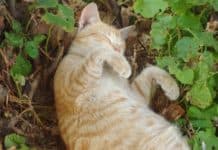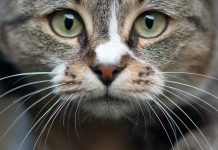Atrioventricular valve dysplasia or heart valve malformation in the cats is a feline condition, wherein the mitral valve or the tricuspid valves are being malformed. This particular condition may result in the valves not sufficiently closing to stop the blood flow when it is supposed to close, or to blood outflow obstruction because of the valves narrowing. The result of this malformation may depend on the location and size of the anatomic abnormality, which is present. Give this article a read and get to learn more about this feline condition.
Heart Valve Malformation in Cats: What is this feline malady?

Without any treatment, the heart valve malformation in cats is likely to result in irreparable heart damage or lethal congestive heart failure. Moreover, the condition may often cause emotional distress, as well as the possibility of early death is extremely possible. Moreover, cats that display common symptoms must be taken for a vet examination instantaneously, as the early detection is an important factor in the probability of the recovery.
Moreover, heart valve malformation in cats or atrioventricular valve dysplasia, is one of the most common congenital heart defects that affect cats. This particular condition occurs when the valves either do not completely close, allowing blood to flow through when it should not, or have become narrowed to an extent that the blood outflow has already been obstructed. Further, the condition is commonly inherited and most commonly perceived in cats or kittens up to 5 years old.
Types of Heart Valve Malformation
The heart valve malformation in cats is classified reliant on which valve has been obstructed, as well as whether the valve is narrowed or dilated.
Stenosis
This is the opposite condition, which occurs when the heart valves get narrow. This may cause the atrium of the heart to dilate while the ventricle gets to shrink.
Dilation
The heart valve dilation happens when the superior chamber or atrium of the heart expands and the rear chamber of the heart broadens.
- Tricuspid valve dilation –results in the pooling of the blood within the body
- Mitral valve dilation –causes the blood to accumulate in the lungs
Causes of Heart Valve Malformation
The heart valve malformation in cats is commonly due to an inherited birth defect. Secondary to a thyroid tumor, hypertrophic cardiomyopathy has also been in connection to the condition. This Siamese cat breeds are most likely to be impacted, and the male cats are more likely to develop the congestive heart failure as the result of the malformation.
Symptoms of Heart Valve Malformation
The symptoms of heart valve malformation in cats will depend on the size and location of the abnormality. When the mitral valve has been obstructed, the cat might show one or more of the symptoms below:
- Congestive heart failure
- Collapse
- Blood clots
- Vomiting
- Difficulty in breathing
- Coughing
- Weight loss
- Exercise intolerance
- Fatigue
Less commonly, dysplasia is located in the tricuspid valve. This is what causes a different set of symptoms, including the following:
- Swollen abdomen
- Loud breathing sounds
- Stunted growth
Prognosis of Heart Valve Malformation

The vet treating the cat will review the full medical history of the cat, as well as discuss the details about the severity and the onset of the symptoms. In case available, a family history might also help in the diagnosis. Additionally, a standard set of lab tests may also be ordered in ruling out the presence of some other conditions, as well as, in most cases, normal results are expected.
Moreover, the visual diagnostic testing may likely be essential in checking for the heart abnormalities. This might include echocardiography, thoracic radiography, and x-rays. In addition, an electrocardiogram will be beneficial in determining whether the heart is normally functioning, a s well as indicate the existence of the abnormal heart rhythms. When the malformation in the heart valve is present, it is just common for the heart to emit a murmuring sound that may be heard using a stethoscope.
Treatment for Heart Valve Malformation
In the event that the cat has developed congestive heart failure already, intensive care and hospitalization may be needed for a better chance at recovery. In most instances, the suggested course of treatment may depend on the austerity of the condition.
Surgical Correction
In rare cases of the condition, surgical procedure in the correction of the defect might be recommendable. Moreover, this is often not a sustainable option as the survival rate tend to be somewhat poor.
Palliative Treatment
Medical treatment is commonly focused in the managing symptoms, as well as improving the overall quality of life of a cat. In case fluid is retained in the abdomen or lungs, it might need to be drained, as well as some diuretics might be prescribed. In some instances, vasodilators may also be used in expanding the blood vessels. Further, the abnormal heart rates might be regulated with the use of antiarrhythmic drug digoxin.









